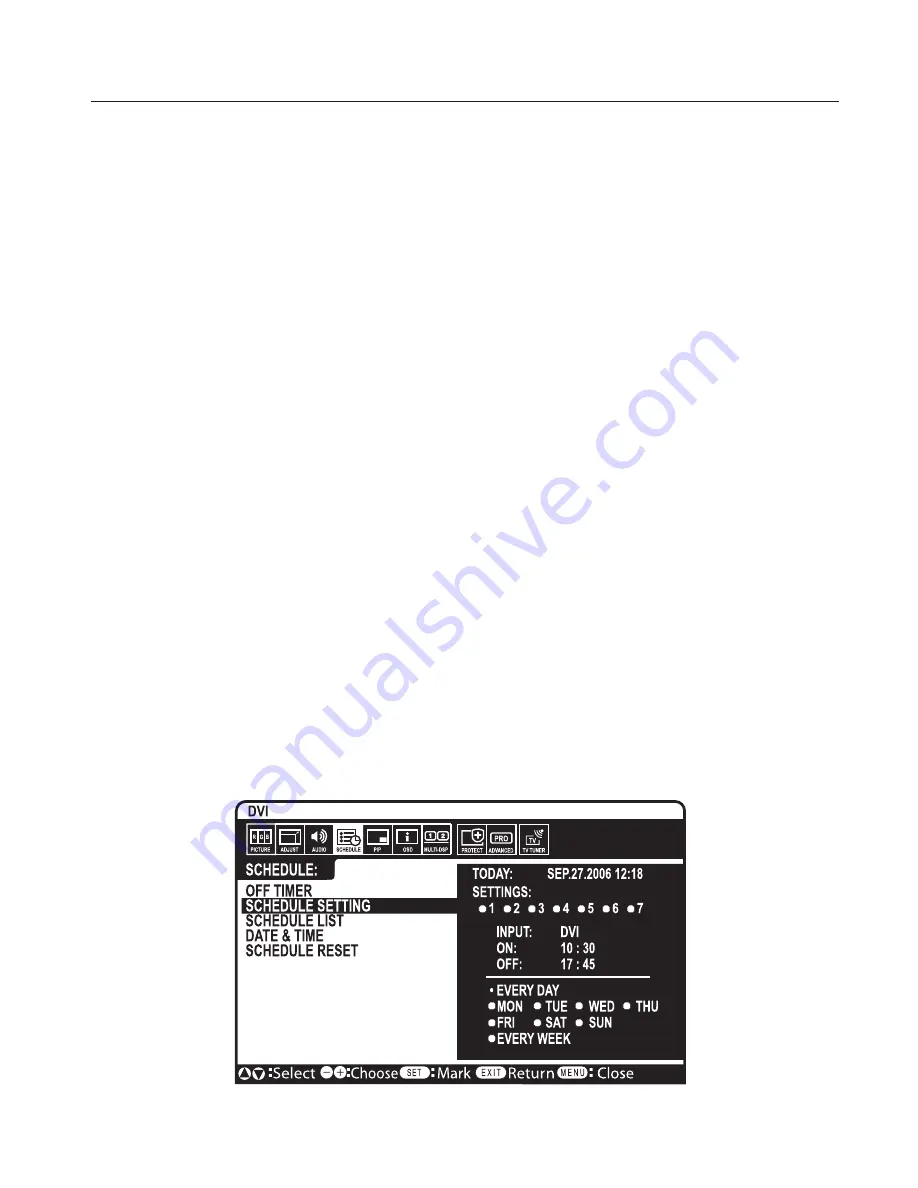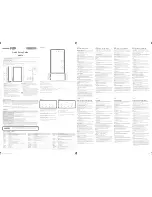
English-34
NOTE 1: CREATING A SCHEDULE
The schedule function allows the display to be set to power
on and off at different times. Up to seven different sched-
ules can be programmed.
To program the schedule:
1. Enter the SCHEDULE menu.
Highlight SCHEDULE SETTING using the up and
down buttons. Press the SET or the + button to enter the
Settings menu. Highlight the desired schedule number
and press set. The box next to the number will turn
yellow. The schedule can now be programmed.
2. Use the up and down arrows to highlight INPUT.
Use the + and - buttons to choose the input source.
3. After the INPUT source is selected, use the down button
to highlight the hours setting in the ON timeslot. Use
the + and - buttons to set the hour. Use the up and down
buttons to highlight the minutes setting. Use the + and
- buttons to set the minutes. Set the OFF time in the same
manner.
4. Use the down button to select a day on which the
schedule will be enabled. Push the set button to enable. If
the schedule is to be ran every day, use the choose EVERY
DAY and press the SET button The circle next to EVERY
DAY will turn yellow. If a weekly schedule is desired,
choose the days of the week using the up and down
buttons and pressing SET to select. Then highlight the
EVERY WEEK option and press SET.
5. After a schedule is programmed the remaining schedules
can then be set. Press CLOSE to leave the OSD or press
EXIT to go back to the previous menu.
NOTE:
If schedules are overlapping then the schedule
with the highest number will have priority over the
schedule with the lowest number. For example Schedule
#7 will have priority over Schedule #1.
NOTE 2: IMAGE PERSISTENCE
Please be aware that LCD Technology may experience a
phenomenon known as Image Persistence. Image Persis-
tence occurs when a residual or “ghost” image of a previous
image remains visible on the screen. Unlike CRT monitors,
LCD monitors’ image persistence is not usually permanent,
but constant images being displayed for a long period of
time should be avoided since there may be a “semi-perma-
nent” effect.
To alleviate image persistence, turn off the monitor for as
long as the previous image was displayed. For example, if
an image was on the monitor for one hour and a residual
image remains, the monitor should be turned off for one
hour to erase the image.
As with all personal display devices, NEC DISPLAY SOLU-
TIONS recommends displaying moving images and using
a moving screen saver at regular intervals whenever the
screen is idle or turning off the monitor when not in use.
Please set the “SCREEN SAVER”, “DATE & TIME” and
“SCHEDULE SETTINGS” functions to further reduce the
risk of Image persistence.
Notes
Summary of Contents for MultiSync LCD4020
Page 1: ...MultiSync LCD4020 LCD4620 User s Manual ...
Page 2: ......
Page 3: ...English Français Español English Français Español ...
Page 4: ......















































